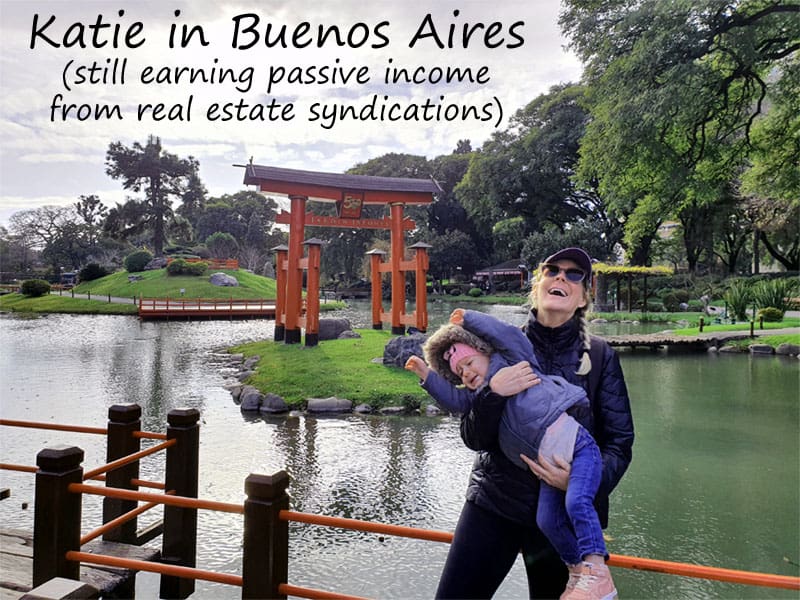
Real estate is expensive. But no one says you have to buy an entire property all by yourself.
Enter: fractional ownership in real estate.
You don’t need to be rich to buy shares in properties. In some cases, you can buy shares in properties for as little as $20. But we’re getting ahead of ourselves.
What Is Fractional Ownership in Real Estate?
As the name suggests, you can buy partial ownership in a property. That could mean direct ownership, where your name appears on the deed alongside other owners.
Or it could mean that you own a portion of the legal entity that owns the property, or the legal rights to a certain percentage of the property’s rental income and profits upon sale.
To delve deeper, you need to understand the different ways to fractionally own real estate.
Ways to Buy Fractional Real Estate
While there are many ways to own partial shares in properties, a few stand out as the most common and accessible.
Keep the following options in mind as you explore fractional real estate investing.
Partner on a Property
Imagine your brother-in-law (the one you like, not the other one) comes to you with a proposal. He’s a real estate investor and has a great deal lined up, but most of his capital is locked up in another deal. He proposes you go in on the property together with a 50/50 ownership split.
An easy enough concept to grasp, right?
Of course, the details can get complicated. Is one of you putting up more money than the other? Putting in more labor in lining up an investment property loan, managing contractors, overseeing property managers or tenants? What happens if an expensive repair comes up and you need to invest more capital in the deal?
Will you own the property under your personal names, or create an LLC to own the property? If the latter, who’s drafting the operating agreement, and what are the terms? What’s your exit strategy?
You get the picture. It can quickly get complicated, and you need deep trust with your partners. It gets even more complex when you have multiple partners owning a single property.
Still, partnering on deals is a great way to learn real estate investing, make new contacts with service providers, reduce your down payment on an investment property, and divide labor and headaches.
If you want to take on those headaches at all, that is.
Fractional Shares in Rental Properties (Crowdfunding)
Several real estate crowdfunding platforms have arisen over the last five years to make it easy to buy fractional shares in rental properties.
The most famous of these is Arrived, which lets you buy shares in either long-term or short-term rental properties. You can buy shares for $100 apiece, and become a fractional owner of the property entitled to rental income and profits upon sale. Arrived typically holds properties for 5-7 years.
Don’t want to wait that long? Try Ark7 or Lofty, both of which offer a secondary marketplace for buying and selling shares. That means you can sell your ownership at any time, based on whatever buyers are willing to pay for shares at that time (just like the stock market). You can hold these as short-term real estate investments if you want — a rare option in real estate. Shares of rental properties start at $20 on Ark7, and for $50 on Lofty. All of them allow non-accredited investors.
You receive passive income distributions every month or quarter, depending on the platform. Best of all, you don’t have to field 3am phone calls from tenants complaining about how they clogged the toilet again. Or hassle with lenders, title companies, contractors, inspectors, or property management companies, for that matter.
Fractional Shares in Commercial Properties (Syndications)
Justas you can buy fractional ownership in single-family rentals, you can also buy shares in multifamily apartment buildings. Or office buildings, or industrial properties, or self-storage facilities, or mobile home parks, or agricultural properties and beyond.
These properties cost a lot more than single-family homes, of course. The downside is that the minimum investment is much higher: typically $50,000 or more, unless you invest through a real estate investing club like ours (cough cough), in which case the minimum investment drops to $5,000.
Why do people invest so much more in fractions ownership in these properties?
To begin with, the returns are often much higher. Most of the syndicators we’ve invested with have delivered an average annual return between 20-70%. That blows the average historical stock return of 10% out of the water.
Like fractional ownership in rental properties, these real estate syndications are completely passive. All you do is write a check, and the syndicator does the rest.
You also get virtually the same tax benefits as if you were a partial owner of a rental property. Better, in fact, because you can take advantage of accelerated property depreciation. That means that you often show a loss on your tax return, even as you collect real income in your bank account each month.
Intrigued? Take our free class on passive investing in real estate syndications.
Private Funds Owning Many Properties
Some real estate syndications own multiple properties as a fund. When you buy in, you become a fractional owner in all of those properties.
In fact, many real estate crowdfunding platforms work similarly. You buy shares in a private fund or REIT (real estate investment trust), and gain an equity interest in all properties owned by that fund. Examples include Fundrise, Streitwise, and Yieldstreet.
You still collect monthly or quarterly distributions on the rental income, and you still get a hefty payout when the fund sells properties. Alternatively, funds might reinvest the proceeds from a sale into bigger and better properties, thereby increasing the value of fund shares.
Private funds like these offer a simple, hands-off way to diversify your portfolio to include many properties.
Public REITs
Lastly, it’s worth mentioning publicly-traded REITs. You’re probably already familiar with them, so we won’t dwell on them long, but they offer another option for fractional investing in properties.
These companies own either properties or loans secured by real property. You buy shares in the company, thereby buying indirect ownership in the properties (or secured debts) too.
On the plus side, you can invest with little cash — the cost of a single REIT share price. That’s often as little as $10-20. You can also sell your shares at any time, making them a rare real estate investment with full liquidity.
That liquidity comes with a downside, though. Public REITs share an uncomfortably close correlation with stock markets, which largely defeats the purpose of diversifying your portfolio to include real estate.
Pros of Fractional Real Estate Investing
Fractional ownership of real estate comes with plenty of benefits. They include:
-
- Labor-free real estate investing: You don’t have to spend time and money trying to find good deals on properties, line up mortgage financing, renovating properties, or hassling with tenants.
- Low minimum investment: You can buy fractional ownership in real estate for as little as $10 through real estate crowdfunding platforms. Even syndications require far less than the down payment on a rental property, if you invest through a real estate investment club like ours.
- Easy diversification: When you can invest smaller amounts of money per property, you can buy ownership interests in more properties. That protects you from any one property or real estate market performing badly.
- Full tax benefits: Fractional owners enjoy nearly all the tax advantages as direct property owners, from property deductions to depreciation to the lower long-term capital gains tax rate on profits.
- Possible liquidity: Depending on how you invest, you might be able to sell your property shares at any time. If you own a property directly, it costs months and thousands of dollars to sell a property.
Cons of Fractional Ownership in Real Estate
No investment strategy is perfect. If it were, everyone and their mother would invest in it, and the returns would tank.
Make sure you understand these downsides to fractional real estate investing in addition to the perks:
-
- Less (or no) control: Passive investing means you no longer get a say in how properties are managed. Even if you buy properties directly with a partner, you still need to make decisions as a team.
- Possible fees: Whoever manages the investment might charge for their efforts. Get crystal clear on the fee structure before investing fractionally in real estate.
- Possible lack of liquidity: Some fractional real estate investments have terrible liquidity. You may not have any option to sell early, and even if you do, you may get hit with an early redemption fee for the privilege.
Fractional Ownership vs. Timeshares
When you buy a timeshare, you buy the right to use a property for a certain amount of time each year. In most cases, you don’t get any ownership in the property itself.
You don’t benefit from appreciation, or income if the vacation property gets rented out while unused by a timeshare owner. Someone else owns the property, you just have usage rights.
With fractional real estate ownership, you’re entitled to your share of the income and profits that the property generates.
(article continues below)
FAQs About Fractional Ownership of Real Estate
Still have questions about fractional real estate ownership? We’ve got you covered.
How much do I need for fractional real estate investing?
It depends on how you go about it. To buy fractional shares in a rental property on Ark7, you only need $20 (or $50 on Lofty, or $100 on Arrived).
It costs even less to invest in the pooled funds offered by Fundrise. You can start investing with $10. Alternatively, you can invest in public REITs for the cost of a single share (typically $10-100).
To directly buy a property with a partner (or several), you likely need thousands of dollars to cover the down payment on the rental property, closing costs, and any repair costs. You can buy into real estate syndications with as little as $5,000 through our Co-Investing Club. If you invest without a club, expect a minimum investment of $50,000 or more in most cases.
Do I need a legal entity to invest?
No, you don’t. Although if you buy a property directly with partners, it may make it easier to list the rules of the partnership and for owners to buy each other out.
What does it mean to own a property as “tenants in common”?
When multiple partners own a property through tenancy in common, each owner can sell or transfer their percentage of the ownership without the other owners’ permission.
The ownership percentage gets included in a partner’s estate when they die and distributed according to their last will. Thus, there’s no right of survivorship: the other owners don’t automatically receive a partner’s share upon their death.
Can I get a loan for fractional real estate ownership?
If you buy a property directly with partners, you can finance it with a mortgage. That remains true whether you buy as tenants in common, joint tenants, or through a legal entity such as an LLC (read up on how to get a mortgage as an LLC).
As for real estate crowdfunding or syndications, you can’t borrow a mortgage loan, of course. But you could theoretically borrow a personal loan or unsecured business lines of credit and use the funds to invest in real estate syndications or crowdfunding.
You can also buy public REITs on margin through your brokerage account, although I don’t recommend it.
What are my responsibilities as a fractional owner?
It depends on the fractional ownership model you use.
If you invest in a real estate syndication, REIT, or real estate crowdfunding investment, you don’t have any responsibilities or obligations. It’s a completely passive investment — you just write a check and sit back and collect returns.
If you buy a property directly with partners, you negotiate the responsibilities with the other partners. One person might take on most of the labor of managing contractors and tenants, or several partners might share them.
Is fractional ownership a good investment?
It certainly can be, but it isn’t necessarily. Every investment comes with risk, and it’s up to you to analyze that risk compared to the potential returns.
You and a partner could buy a great rental property at a fantastic price. Or you could overpay on a shoddy property. For that matter, you could score a good deal and still earn low returns or lose money if you do a bad job screening tenants or rent to a professional tenant.
Final Thoughts
The fractional investment model has made it far easier to invest in real estate over the last few years. Because you can invest less cash, you can get started earlier, giving your investment more time to deliver compound returns.
Beyond the low barrier to entry, you can spread your money across many properties. That makes it easy to diversify and invest a small amount in a wide real estate portfolio.
Don’t know where to start? Try investing $20 in Fundrise and $20 in a property on Ark7. For $40 total, you become a fractional investor in many real estate assets.♦
What are your experiences with fractional property ownership? If you haven’t invested in fractional ownership of real estate, what’s held you back?
More Real Estate Investing Reads:

G. Brian Davis is a real estate investor and cofounder of SparkRental who spends 10 months of the year in South America. His mission: to help 5,000 people reach financial independence with passive income from real estate. If you want to be one of them, join Brian and Deni for a free class on How to Earn 15-50% on $5K in Real Estate Syndications.



























As a beginner with limited investment capital, fractional investing makes an easy starting point. I’ve invested a little with Arrived and Fundrise, going to check out Ark7 and your real estate investing club.
Sounds great Marla!
Adding to my investment portfolio. Thanks for the tip!
Glad you found it helpful Heather!
I’m intrigued by the fractional ownership options that offer liquidity. Makes it a lot easier to wrap my head around investing in real estate when I can sell shares at any time.
I hear you Jack!
cool that you can reap the same financial rewards as if you owned the property outright
Agreed David!
I’m curious about coinvesting, but somewhat hesitant to join. Is the dividend substantial enough to justify the investment?
Hi Noemi, the distribution yield (often referred to as cash-on-cash return with real estate syndications) varies by the deal. In most cases it ranges from 4-8%, and it tends to start low and then grow. Keep in mind that the bulk of the returns come at the end when the property sells.
Hope that helps!